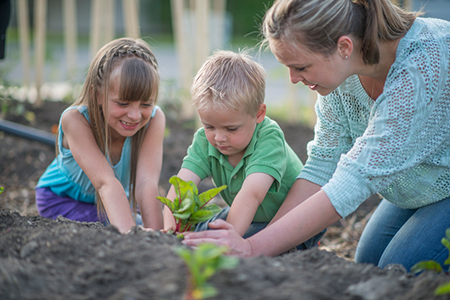(TNS)—Want to save your aching back from double digging or rototilling in the garden? Kevin Marini has a plan for you.
Marini, with the Placer-Nevada Master Gardeners, is a big proponent of no till vegetable gardening.
Although it’s not as simple as just sticking a plant in untouched earth, it’s fairly simple and doesn’t involve backbreaking labor. Best of all, it’s a great way to produce healthy soil, improve the environment and grow an awesome, sustainable garden.
Here are some tips on no till gardening:
— Research has shown that soil has a wealth of active organisms and microorganisms that shouldn’t be disturbed by aggressive digging.
— To get started, prepare your beds in the fall by digging up the bed lightly to allow water and nutrients to permeate the ground, then put down a layer of newspapers or cardboard. Next, create an in-bed compost pile, adding equal amounts of browns and greens, up to 24 inches deep, and mixing them together. Cover the bed with straw or something that will allow water and air to move through the barrier, yet keep weed seeds from blowing in. Let the beds sit, watering when necessary, throughout the fall and winter. In the spring, pull back the covering and put in your plants.
— The next fall, grow a cover crop in the bed and practice the chop-and-drop method, cutting the plants at ground level and dropping the cut material in the bed to decompose and feed the earth. Leave the roots in the ground—they’ll decompose, too. You’ll be ready to plant again in the spring.
— To save yourself even more work, grow a cover crop that will be killed by colder temperatures. Instead of having to chop and drop, nature will do the work for you.
No till gardening is not fast gardening, Marini says. You need to be patient, allowing the material to decompose and feed the soil.
Advantages
— The first advantage, Marini says, is that you’re saving your back. Tilling the soil, either with a spade or a rototiller is exhausting.
— It’s important to maintain the soil ecology and the food web. Organisms and microbes live in all layers of the soil, and they don’t like to be moved around. Letting them remain undisturbed so they can what they are intended to do, produces the most healthy soil.
— No till soils also have a greater ability to hold water and air.
Disadvantages
— If you have a perennial weed problem, you’ll need to tackle the weeds before starting a no till bed.
— Moles, voles and gophers also appreciate the no till garden because it will have lots of food for them. Again, before starting, taking care of pest issues.
— The bed will need watering during the winter in order for the compost to break down and the microorganisms to thrive. If we have a dry winter, you’ll need to give the beds supplemental water.
— No till beds, because they are protected by layers of mulch and compost, can take a bit longer to warm up in the spring.
— If you use cardboard as the base for your bed, you may attract termites, recent studies are showing. The solution is to use newspaper.
©2016 The Mercury News (San Jose, Calif.)
Distributed by Tribune Content Agency, LLC.











